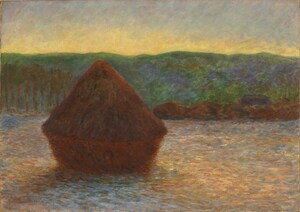The exhibition, organized by Ilona Katzew, curator and department head of Latin American Art at LACMA, features more than 90 works from Guatemala, Mexico, Peru, Colombia, and Ecuador in a range of media, many of which are recent acquisitions. With an emphasis on the complex dynamics that led to the creation of these powerful artworks, Art and Imagination underscores the creative power of Spanish America and its central position as a global crossroads.
The early modern era (ca. 1500–1800) was a period marked by imperial expansion, conquest, colonization, and the transatlantic slave trade. Cataclysmic social and geopolitical shifts brought people into closer contact than ever before, sparking an evolution of the material culture around them. After the Spaniards began colonizing the Americas in the late 15th century, artists in the region drew from a wide range of traditions—Indigenous, European, Asian, and African—reflecting the interconnectedness of these cultures and ideas in the early modern world.
"Spanish America was neither a homogeneous nor a monolithic entity, and local artists were not passive absorbers of foreign traditions," said Katzew. "Without ignoring the profound violence that marked the process of conquest and colonization, this exhibition and accompanying catalogue emphasize the intricate social, economic, and artistic dynamics that led to the creation of astounding artworks within the budding new societies."
The Spanish conquest of part of the Philippines in 1565 inaugurated a commercial route that connected Asia, Europe, and the Americas. Private homes and civic and ecclesiastic institutions in Spanish America were filled with imported and locally made objects. In turn, many objects from Spanish America also traveled across the globe, attesting to their wide appeal. This confluence of riches signaled the status of the Americas—what one contemporaneous author described as "the archive of the world."
Among the exhibition's highlights are the recently acquired and restored Pietá by the Potosí (Bolivia) painter Melchor Pérez Holguín, an impressive folding screen depicting an Indigenous wedding scene near Mexico City painted by an unidentified 17th-century artist, and a series of eye-catching works employing mother-of-pearl known as enconchados.
Organized thematically, the exhibition begins with "Eyes of the Imagination: Envisioning the Divine," a section containing large devotional images, many of which were commissioned for altarpieces and monastic cycles in the Catholic church. While the church played an important role in spreading European religious subjects, local artists retained significant agency, often grounding their compositions in local histories. "Fashioning Identity" includes costumes and paintings that demonstrate how dress could construct and reinforce social and ethnic differences, as seen in the 18th-century Mexican casta (caste) paintings. "Converging Materials" focuses on the widespread influx of luxury goods from Asia and elsewhere and their ingenious transformation by local artists, including lacquerware and shell-encrusted paintings and furnishings. "The Art of Two Artists: The Culture of Copies" looks at how the tradition of creating pictorial copies by referencing local and foreign source material was part of the creative process of artists, demonstrating the fluid circulation of images and ideas between Europe and Spanish America. The exhibition concludes with "Intimate Faiths," a selection of small-scale paintings, sculptures, and finely rendered badges worn by nuns and friars for private and domestic devotional use.
Exhibition Credit
Organized by the Los Angeles County Museum of Art
Supporter Acknowledgment
Supported in part by the Sandra Schatten Foundation
Program and Spanish Translation Sponsor: Center for Latin American, Caribbean, and Latinx Studies at Vanderbilt University
The Frist Art Museum is supported in part by The Frist Foundation, Metro Arts, the Tennessee Arts Commission, and the National Endowment for the Arts.
Connect with us @FristArtMuseum #TheFrist
FOR ADDITIONAL INFORMATION
Buddy Kite: 615.744.3351, [email protected]
Ellen Jones Pryor: 615.243.1311, [email protected]
About the Frist Art Museum
Accredited by the American Alliance of Museums, the Frist Art Museum is a 501(c)(3) nonprofit art exhibition center dedicated to presenting and originating high-quality exhibitions with related educational programs and community outreach activities. Located at 919 Broadway in downtown Nashville, Tenn., the Frist Art Museum offers the finest visual art from local, regional, national, and international sources in exhibitions that inspire people through art to look at their world in new ways. Information on accessibility can be found at FristArtMuseum.org/accessibility. Gallery admission is free for visitors ages 18 and younger and for members, and $15 for adults. For current hours and additional information, visit FristArtMuseum.org or call 615.244.3340.
SOURCE Frist Art Museum








Share this article